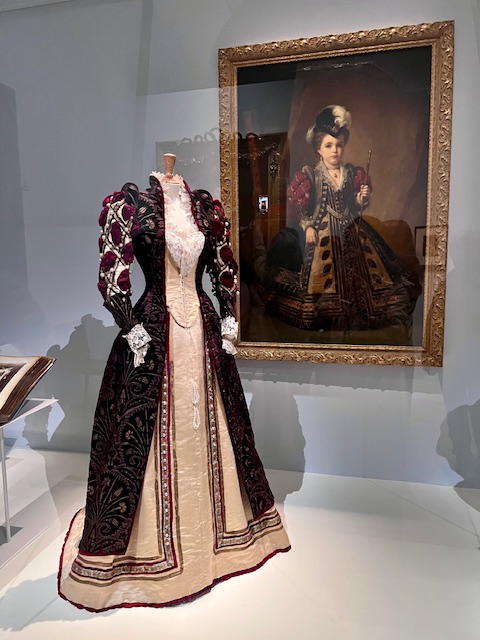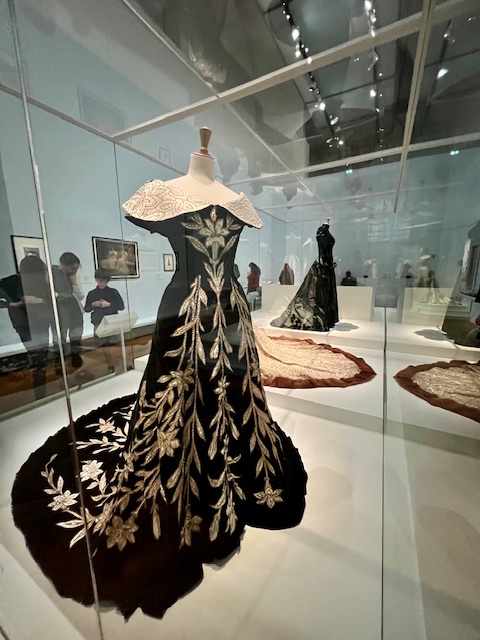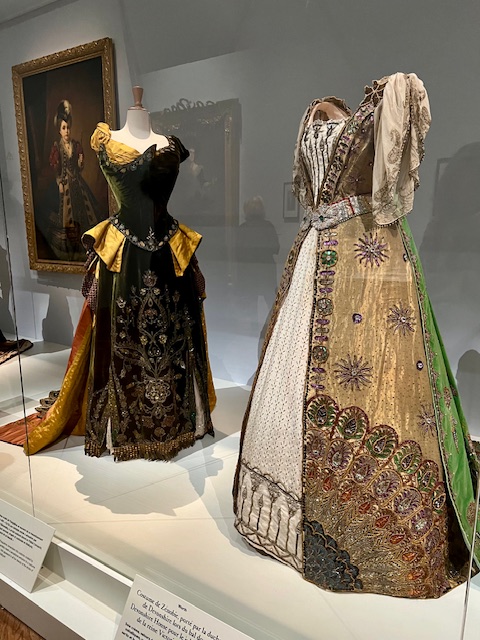
During my spring trip to Paris, one of the things I was most looking forward to was visiting the Worth: Inventing Haute Couture exhibit at the Petit Palais. As someone fascinated by the history of fashion, this exhibition was high on my list of must-sees, and I’m so glad I made time for it—it absolutely lived up to expectations.
The exhibit is a deep dive into the life and legacy of Charles Frederick Worth, the English designer who is widely considered the father of haute couture. I thought I had a general understanding of his importance, but walking through the beautifully curated rooms, I realized just how revolutionary his work was. Worth didn’t just design beautiful dresses—he transformed the entire fashion system. He was the first to create seasonal collections, use live models to present his garments, and shift the power from client to designer. It’s incredible to think that so much of what we associate with modern fashion began in his Parisian atelier in the mid-19th century.
The garments on display are stunning—intricately embroidered gowns, luxurious fabrics, and impossibly delicate details. Some were made for royalty and high society figures like Empress Eugénie and Lady Curzon, and it’s easy to see why they trusted Worth with their public image. The exhibit also explores his collaborations with other luxury houses like Cartier and Louis Vuitton, and how he helped elevate fashion into a true art form.
What struck me most was how much I learned—not just about Worth himself, but about the birth of haute couture in Paris. The exhibit covers everything from his design process to the evolution of women’s daily dress, and even the rise of fashion photography. It paints a vivid picture of how one man’s vision helped shape the global fashion industry.
One of the most captivating aspects of the exhibit was the abundance of design sketches and portraits—some delicate, others vividly rendered—showing women in Worth’s gowns. These works brought a whole new dimension to the garments themselves. Seeing the original sketches, often annotated with fabric swatches or precise tailoring notes, gave me a glimpse into Worth’s creative process. They revealed the meticulous planning and artistry that went into each design, long before a needle touched fabric.
The painted portraits were equally powerful. Many featured his most famous clients—elegant women posed in opulent ballgowns, their posture and expressions radiating the prestige that came with wearing a Worth creation. These images not only showcased the dresses but also communicated the social importance of fashion at the time. It struck me how these gowns were more than just clothing—they were symbols of identity, status, and artistic expression. Seeing them immortalized in art reminded me that Worth didn’t just design for the body—he designed for history.
If you’re in Paris before the exhibit closes in September, I highly recommend going. Whether you’re a fashion enthusiast or just curious about cultural history.
It’s so worth it!







Leave a Reply